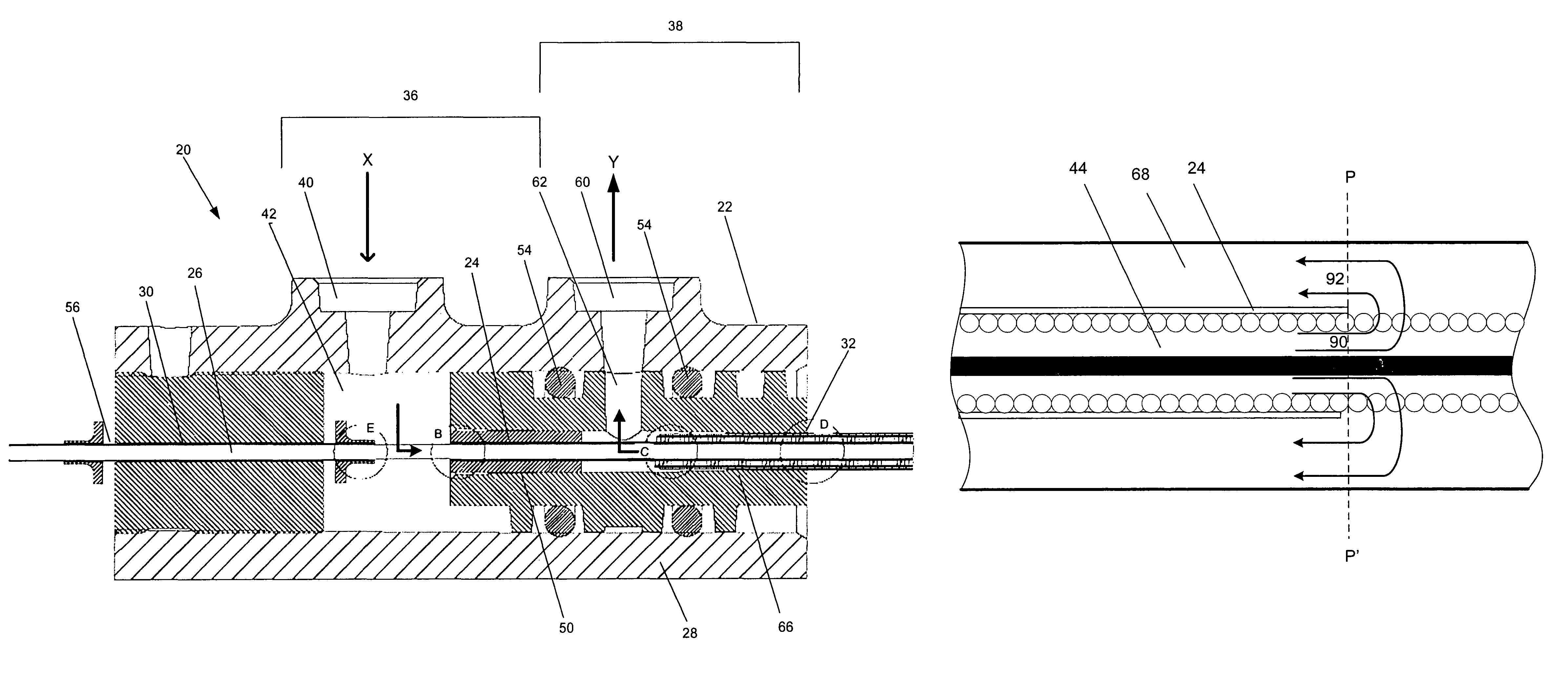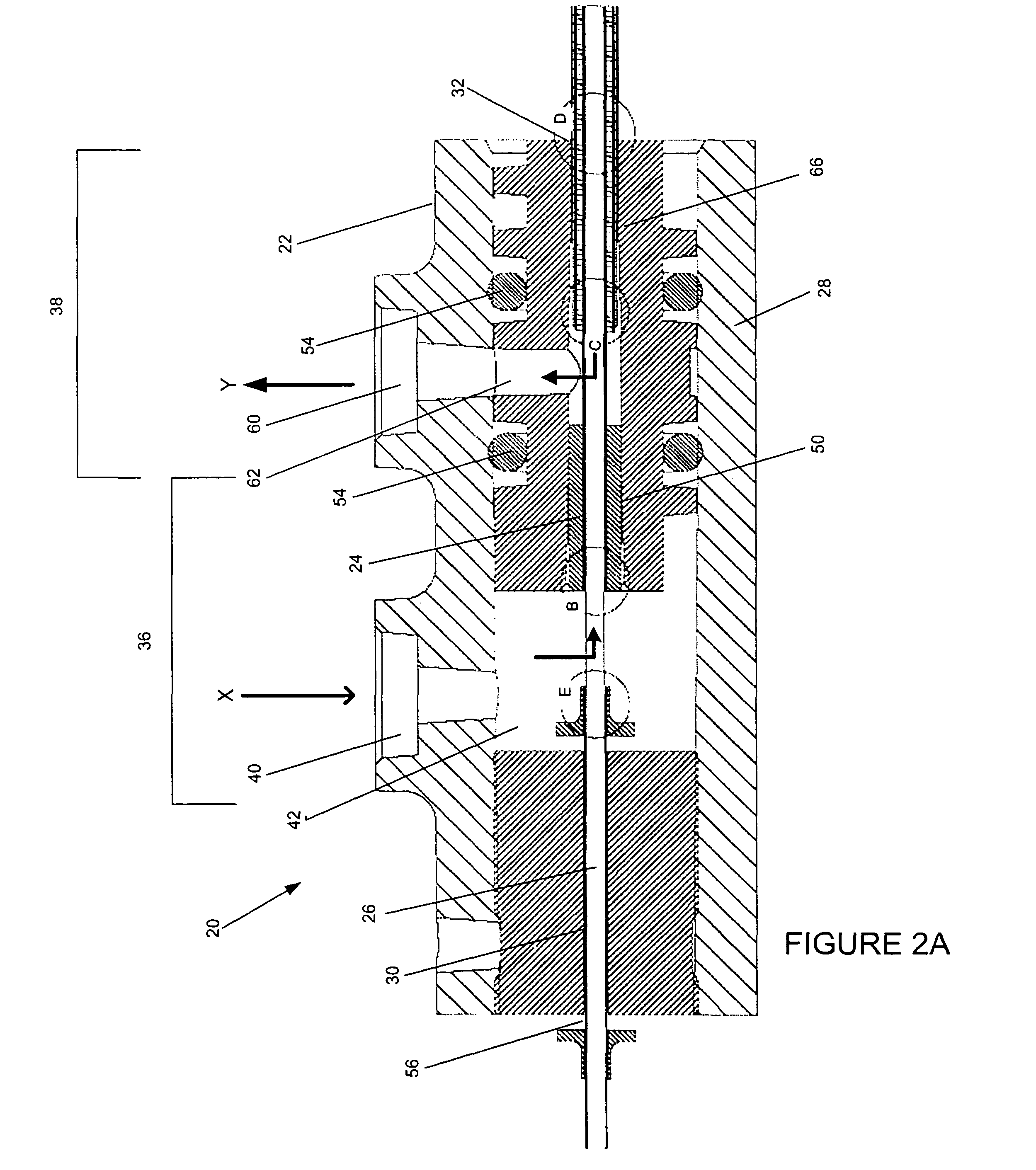Liquid seal assembly for a rotating torque tube
a technology of rotating torque and liquid seals, which is applied in the direction of surgical forceps, catheters, applications, etc., can solve the problems of blood flow becoming unstable, health risks, and devices that do not employ guidewires, and achieve the effect of effectively preventing vacuum loss
- Summary
- Abstract
- Description
- Claims
- Application Information
AI Technical Summary
Benefits of technology
Problems solved by technology
Method used
Image
Examples
Embodiment Construction
[0022]A sealing assembly is provided to hinder air or other fluid from seeping between various components of a medical device. In one aspect of the sealing assembly, a liquid seal site prevents air from traveling along a torque tube, such as down a drive shaft of a catheter system. A liner surrounds the torque tube and an infusion port permits a sealing liquid to immerse a flood space within the inside diameter of the liner, i.e. between the liner and the torque tube and / or within the torque tube, thereby creating a liquid seal around the torque tube. In one embodiment of the sealing assembly, an aspiration port is provided to force suction into a lumen extending along the length of the medical device in a distal direction. The liquid seal prevents diluting of the suction pressure by stopping ingress of air.
[0023]With this sealing assembly, a high tolerance seal is not required for the torque tube and there is no significant friction added. Thus, the clearances of the seal of the pr...
PUM
 Login to View More
Login to View More Abstract
Description
Claims
Application Information
 Login to View More
Login to View More - R&D
- Intellectual Property
- Life Sciences
- Materials
- Tech Scout
- Unparalleled Data Quality
- Higher Quality Content
- 60% Fewer Hallucinations
Browse by: Latest US Patents, China's latest patents, Technical Efficacy Thesaurus, Application Domain, Technology Topic, Popular Technical Reports.
© 2025 PatSnap. All rights reserved.Legal|Privacy policy|Modern Slavery Act Transparency Statement|Sitemap|About US| Contact US: help@patsnap.com



